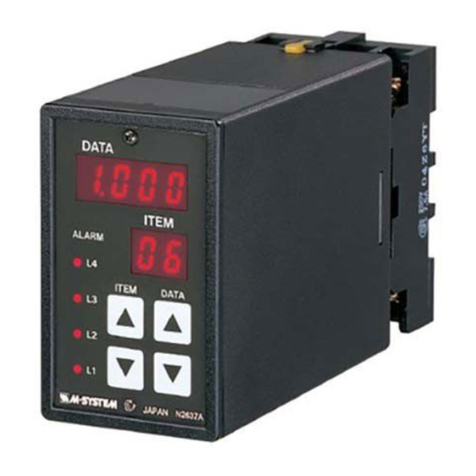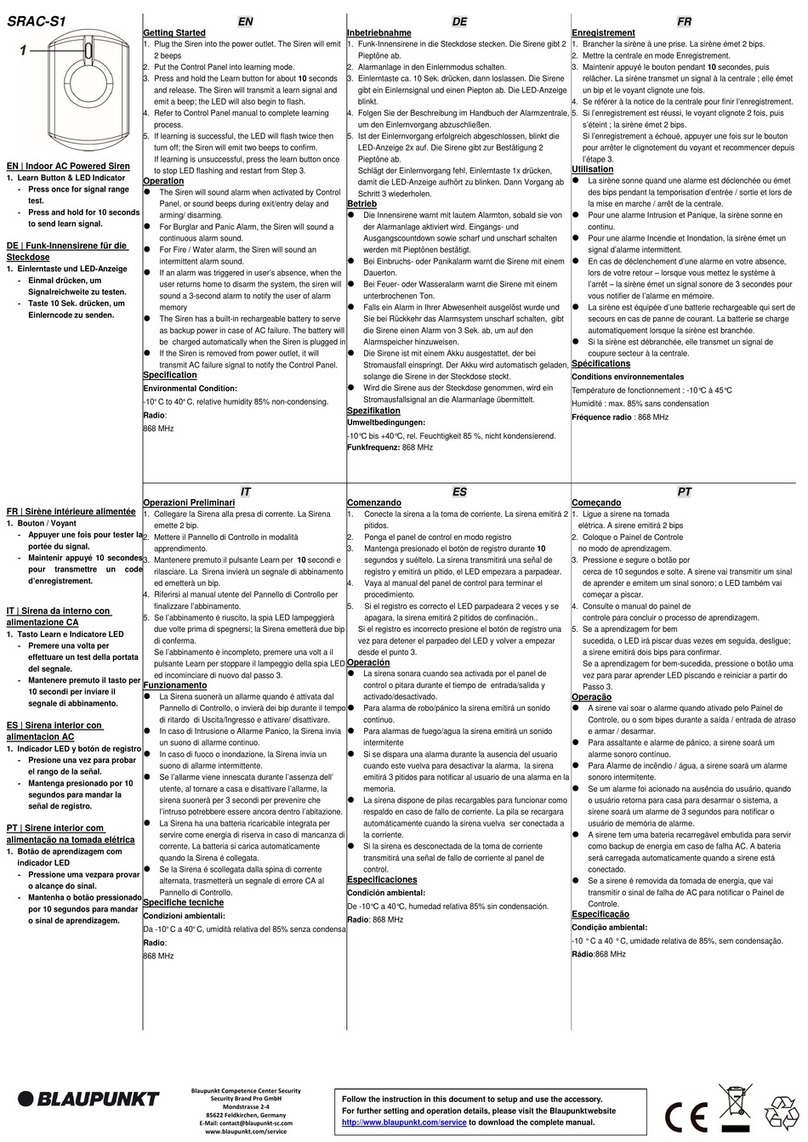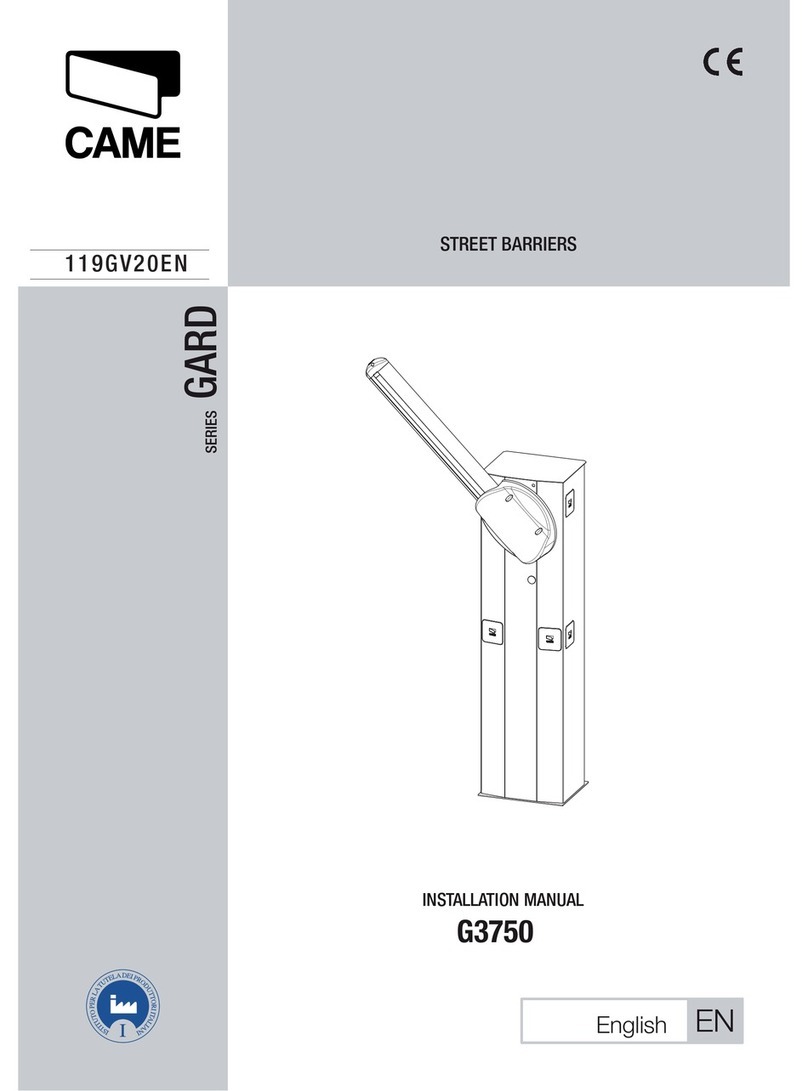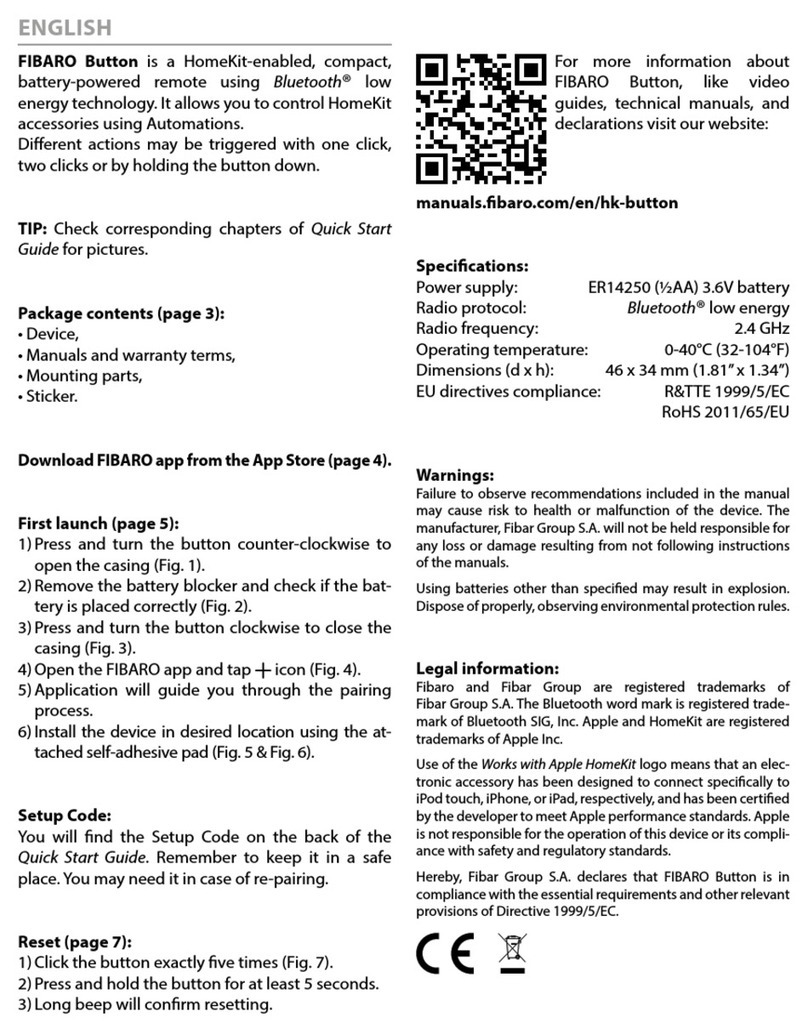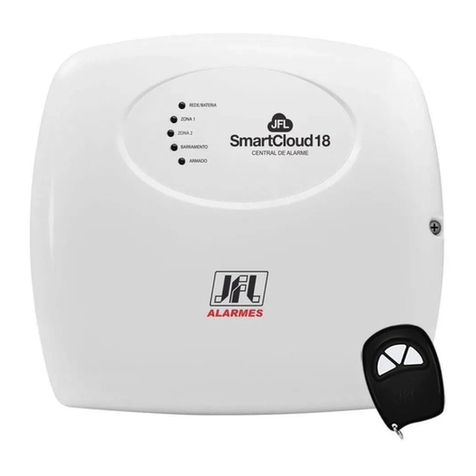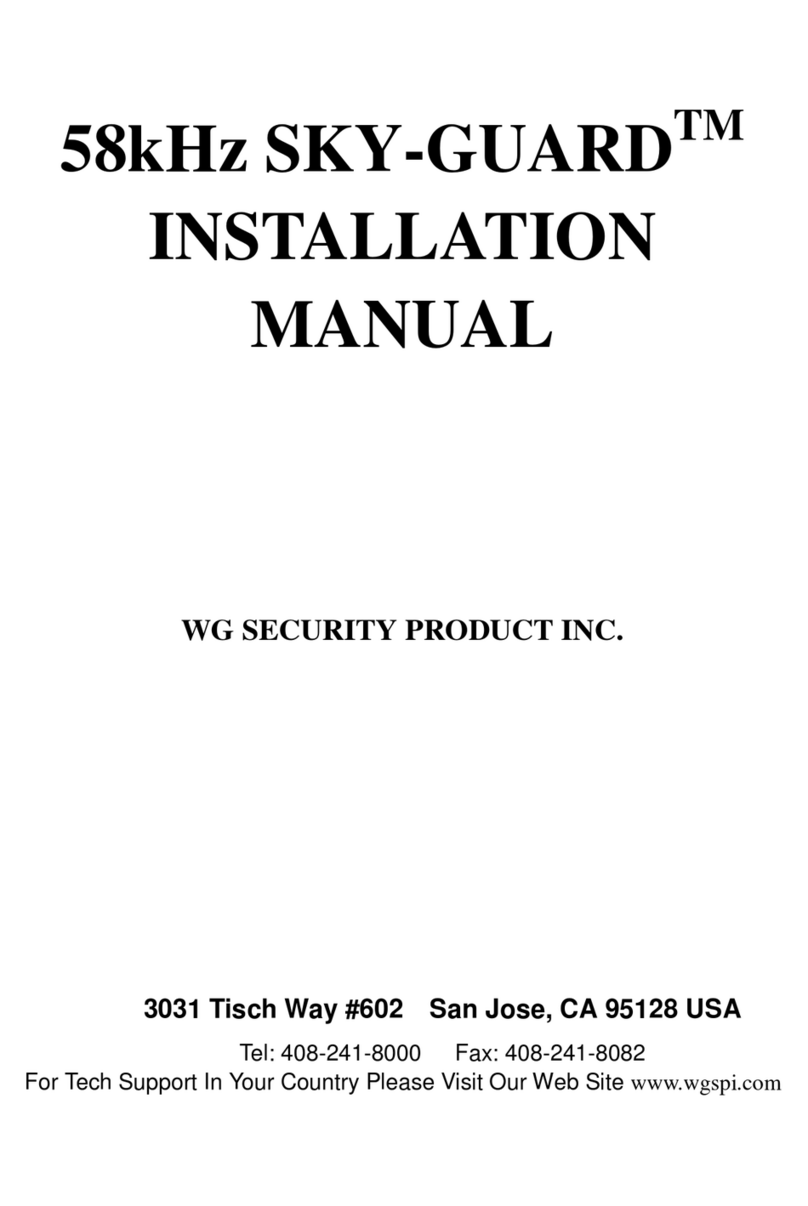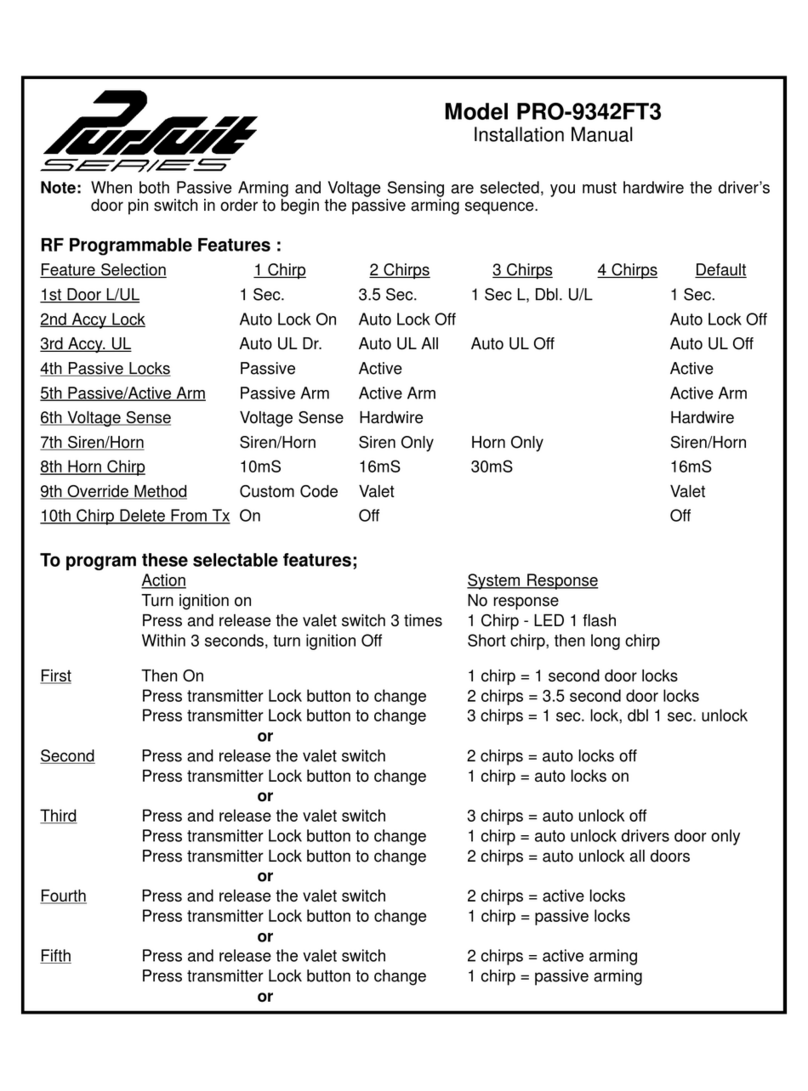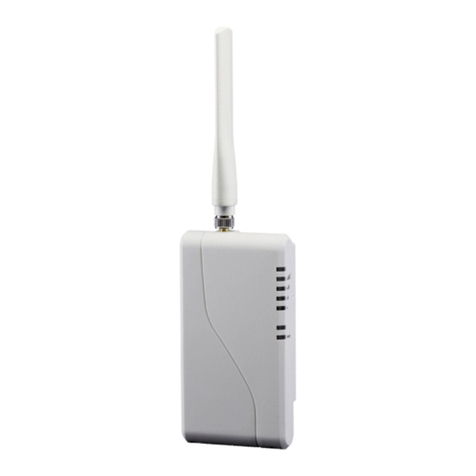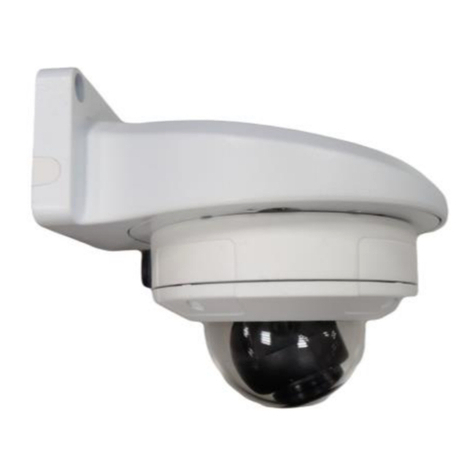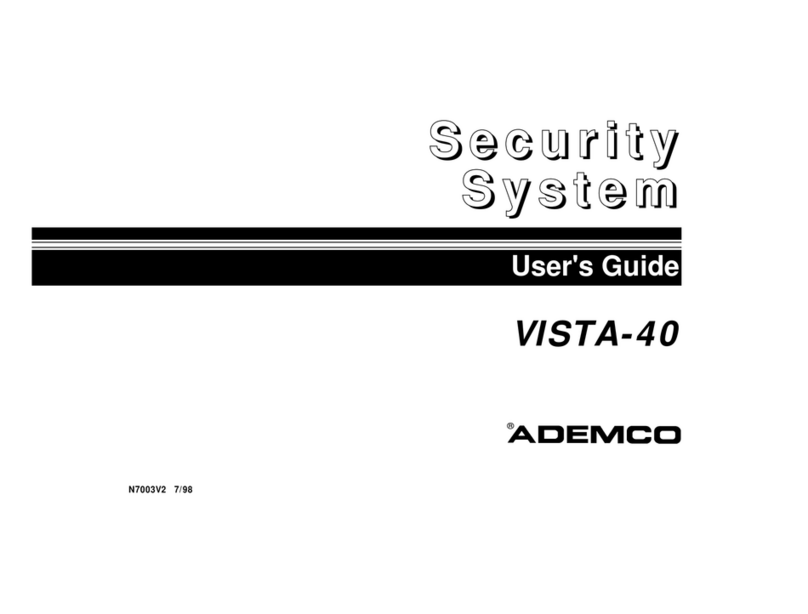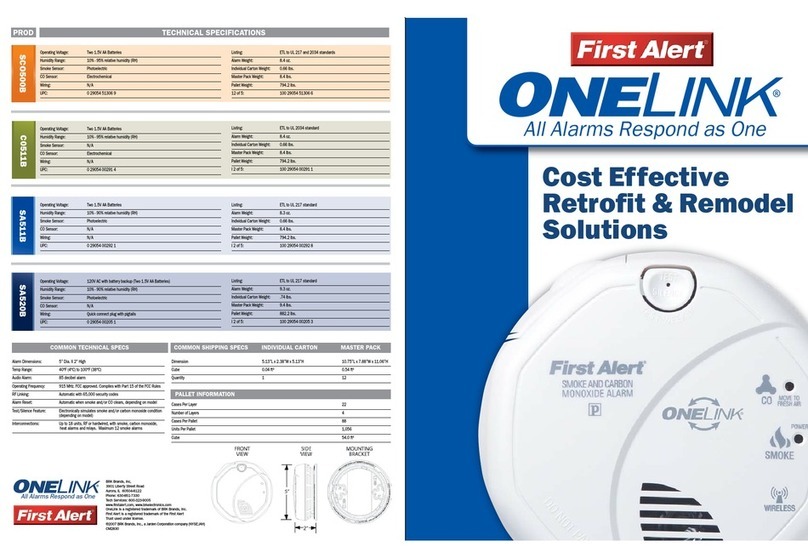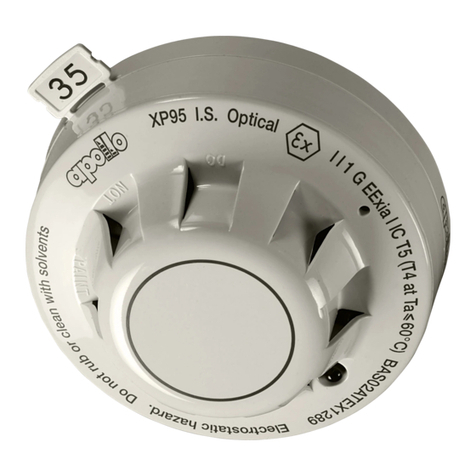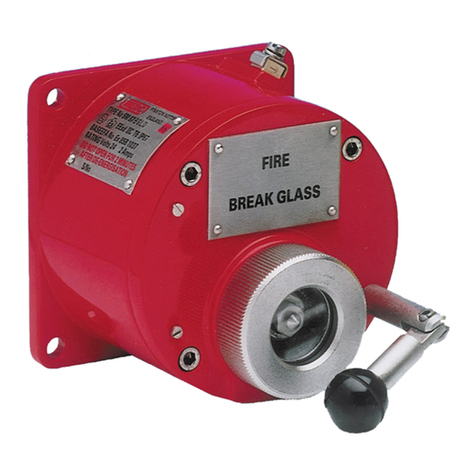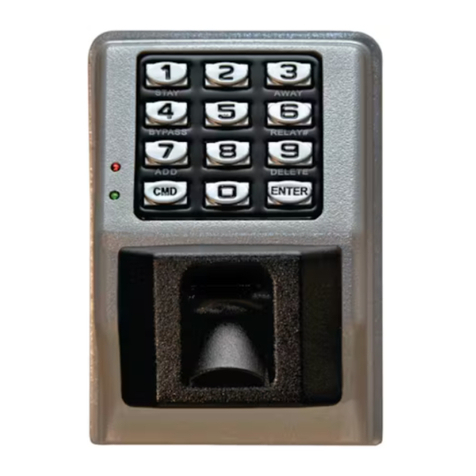INSYS TwinLock 7220 User manual

TwinLock
Assembly Instructions
Version 1.12
1
TwinLock
7220/eCode/WTU/compact
Assembly Instructions
EN 1300
M 105361
/
M 102309 Hig Security Lock – Class 3 (TwinLock 7220, - WTU/3)
G 105133
/
G 102013 IAS – ACE Switc Element - Class C
G 108062 Intrusion detector TwinAlarm
G 106016 / G 106015 IAS – ACE Locking Element - Class C
G 108062 Intrusion detector TwinAlarm
M 106302 / M 106301 Hig Security Lock – Class 2 (TwinLock WTU I, - eCode, -compact)

TwinLock
Assembly Instructions
2
Version 1.12
Copyrig t © May 09 INSYS MICROELECTRONICS GmbH
Any duplication of t is manual is pro ibited. All rig ts on t is documentation and t e devices are wit
INSYS MICROELECTRONICS GmbH Regensburg.
Restrictions of guarantee
T is andbook contains a concise description. T e compilation of t e text as been made wit t e
utmost care. Despite all efforts, t ere may be deviations compared wit t e actual functions. No
guarantee can t erefore be given for t e accuracy of t e contents. We can neit er take over a legal
responsibility nor any liability for incorrect information and t eir consequences. Suggestions for
improvements and comments are gladly accepted.
Trademarks
T e use of a trademark not s own below is not an indication t at it is freely available for use.
INSYS ® is a registered trademark of INSYS MICROELECTRONICS GmbH.
Windows™ is a registered trademark of Microsoft Corporation.
Publis er:
INSYS MICROELECTRONICS GmbH
Waffnergasse 8
93047 Regensburg, Germany
P one: 0941/58692-22
Fax: 0941/563471
Internet: ttp://www.insys-security.de
Subject to tec nical c anges. Errors ecxepted.
Date: May 09
Version: 1.12

TwinLock
Assembly Instructions
Version 1.12
3
T e assembly instructions presented contain all information necessary for t e
assembly and implementation of t e TwinLock 7220, TwinLock eCode, TwinLock
WTU and TwinLock compact systems.
T e operation and configuration of t e system are described in t e documents
MANUAL and QUICK REFERENCE GUIDE.
Sections marked with this symbol contain important notes regarding the safe,
damage-free operation of this product.

TwinLock
Assembly Instructions
4
Version 1.12
- Table of Contents -
1. GENERAL .......................................................................................................................................................... 5
1.1.
S
YSTEM
G
RAPHICS
........................................................................................................................................ 5
1.2.
S
YSTEM
D
ESCRIPTION
................................................................................................................................... 7
1.2.1. Input Unit: FlatControl......................................................................................................................... 7
1.2.2. Lock: TwinLock..................................................................................................................................... 7
1.2.3. Bus distributor: TwinConnect ............................................................................................................... 8
1.2. . Extension Unit: TwinXT........................................................................................................................ 8
1.2.5. Arming Device: TwinAlarm .................................................................................................................. 9
2. INITIAL OPERATION .................................................................................................................................... 11
2.1.
O
VERVIEW
P
ROCESS
S
TEPS
......................................................................................................................... 11
2.2.
A
SSEMBLY OF THE
F
LAT
C
ONTROL
I
NPUT
U
NIT
.......................................................................................... 14
2.3.
A
SSEMBLY OF THE
T
WIN
L
OCK
.................................................................................................................... 17
2.4.
A
SSEMBLY OF THE
T
WIN
C
ONNECT
B
US
D
ISTRIBUTOR
............................................................................... 19
2.5.
A
SSEMBLY OF THE
T
WIN
T
E
TENSION
U
NIT
........................................................................................... 20
2.6.
A
SSEMBLY OF THE
A
RMING
D
EVICE
T
WIN
A
LARM
...................................................................................... 26
2.7.
T
WIN
A
LARM
W
IRING AND
H
ARDWARE
C
ONFIGURATION
........................................................................... 27
2.7.1. General Interfaces............................................................................................................................... 29
2.7.2. Connecting the Burglary Alarm System .............................................................................................. 31
2.7.3. Main Distributor ................................................................................................................................. 38
2.7. . Remote Release via Remote Data Transmission ................................................................................. 39
2.8.
S
YSTEM
S
ETUP
/C
HANGING THE
C
ONTROL
U
NIT
......................................................................................... 40
3. TECHNICAL DATA ........................................................................................................................................ 43
Revision History

TwinLock
Assembly Instructions
Version 1.12
5
1. General
1.1. System Graphics
winLock 7220 Alarm
winLock
TwinLock
winLock
Secured Area
winConnect
winLock
winLock
FlatControl
BUS A
BUS A
BUS B
BUS B
BUS A
BUS B
VdS
TwinLock
winAlarm
BUS A
BUS B
Zeitsperre
inaktiv
RS232
VdS
I/O
BAS

TwinLock
Assembly Instructions
6
Version 1.12
winLock 7220/eCode/W U/compact
Flat Control incl. Power supply and win X (1 lock)
winLock 7220/eCode/W U/compact
Flat Control incl. Power supply and win X (2 locks)
123
4
7
F
5 6
8 9
0 F
TwinConnect
winLock
TwinXT
BAS
EMA
FlatControl
Power
Supply
1 2 3
4
7
F
5 6
8 9
0 F
TwinConnect
winLock
TwinXT
winLock
BAS
EMA
FlatControl
Power
Supply

TwinLock
Assembly Instructions
Version 1.12
7
1.2. System Description
winLock 7220 - Alarm is an electronic ig security lock system wit integrated
arming device for a burglary alarm system class 3/C. It is a modular system. Up to
14 locks can be connected (TwinLock 7220).
T e security-relevant system parts are designed fully redundant.
T e system consists of t e following components:
1 Control unit = Terminal
1..3 Locks (TwinLock 7220) or
1…2 Locks (TwinLock eCode/WTU/compact)
1 Arming device = BAS connection, distributor
1 Bus distributor = Connector for t e individual components ( ub)
1...2 Extension units TwinXT
1.2.1. Input Unit: FlatControl
T e input unit is mounted on t e outside of t e safe
(see assembly of t e input unit) and is used to control
and operate t e locking system (code input,
programming, etc.), as well as to arm or disarm a
burglary alarm system using a p ysical code (c ip
card).
1.2.2. Lock: winLock
T e locks are mounted wit in t e secured area of t e
safe (see assembly of locks). T e mnemonic codes are
stored and evaluated inside t e locks.

TwinLock
Assembly Instructions
8
Version 1.12
1.2.3. Bus distributor: winConnect
T e bus distributor TwinConnect enables t e
connection of t e individual system components.
T e system is connected by means of a redundant
bus system (BUS A and BUS B). T is bus system
allows t e entire system to be upgraded to 2/3 locks
(TwinLock 7220).
TwinConnect allows t e connection of t e input unit, t e arming device, and up to 2/3
locks. T ere is also t e possibility to cascade several bus distributors, i.e. to connect
several TwinConnect units in series, to be able to connect several locks.
In addition, TwinConnect as a power supply unit (12 VDC), w ic can supply t e
TwinLock lock system. (W en t e arming device is connected, owever, t e system
must be supplied t roug t e BAS).
1.2.4. Extension Unit: winX
T e TwinLock system can very easily be extended by 4
inputs and 2 outputs by means of t e extension unit
winX . Basically, a TwinXT can be connected to eac
lock in t e system. Consequently, eac lock can be
specifically locked or released, and eac lock can ave
a bolt system contact.
2 switc ing inputs (release/bolt system contact) for lock 1
2 switc ing inputs (release/bolt system contact) for lock 2
2 relay outputs (status/silent alarm) (30V/1A)
Power supply 12 VDC
Antitamper loop wit tamper switc

TwinLock
Assembly Instructions
Version 1.12
9
1.2.5. Arming Device: winAlarm
T e arming device TwinAlarm is mounted inside t e
safe and is used as a connecting link between t e
terminal FlatControl (input unit) and t e locks and a
burglary alarm system (BAS), as well as to connect a
serial printer/PCs, and as a distributor for t e burglary
alarm system (bolt contacts, door contacts, resistance
monitoring, etc.).
Soldering terminals for t e mounting of resistors for
resistance monitored lines are available. T e inputs can be customized in various
ways, using jumpers.
In winAlarm, t e electronic keys (c ip cards) as well as t e input signals of t e
burglary alarm system are evaluated.
T e TwinAlarm ousing is protected against sabotage by t e means of a tamper
switc and protection on all sides, and it is secured wit a sealing ad esive label.
BAS Inputs:
BAS READY Prevents t e BAS from being armed
(customization by jumper and software).
DISARM BLOCK prevents t e BAS from being disarmed
(customization by jumper and software).
RELEASE Prevents t e unlocking of t e locks
(customization by jumper and software).
ACKNOWLEDGEMENT Evaluates t e arming acknowledgement of t e BAS
(customization by jumper and software).
Other Inputs:
NO TIMEOUT
Enables t e interruption of t e timer programs (weekly
programs, special days, blocking time), so t at, for example,
persons locked into t e safe may be freed during an active
timer program.
CENTRAL CONTACT
T e central contact prevents t e s utting of locks w en t e bolt
system is open.

TwinLock
Assembly Instructions
10
Version 1.12
Outputs:
ALARM
T e relay switc es, w en a ‘silent alarm’ was triggered during
t e code input at t e FlatControl device. (last code digit +1).
T e relay is triggered for 2 seconds. All relay contacts are
directed to t e screw terminals. Resistors for resistance
monitored lines may be employed.
ARMED/DISARMED
T e Relay is used to arm or disarm t e burglary alarm system.
All relay contacts are directed to t e screw terminals. Resistors
for resistance monitored lines may be employed.
STATUS
T e relay is used to indicate t e status of all locks in t e
system. All relay contacts are directed to t e screw terminals.
Resistors for resistance monitored lines may be employed.

TwinLock
Assembly Instructions
Version 1.12
11
2. Initial Operation
2.1. Overview Process Steps
A) Installing or mounting individual components
(description see C apter 2.2 to 2.8)
Attention: Do not connect the power supply or batteries!!!
B) winAlarm wiring or hardware configuration
(description see C apter 2.7)
winX wiring or hardware configuration
(description see C apter 2.6)
C) Bus cable installation
2 bus cables (bus A/B) from eac system component are connected to
TwinConnect.
Attention: During the initial installation, only 1 lock may be
connected. his lock will receive the lock number #1
and will in the future be operated as system lock. he
status of the system lock etermines the release of the
system for configuration and service.
he other locks will be logged in later when the
system is set up.
D) Connecting the power supply
W en a system is set up wit t e arming device TwinAlarm, t e power supply
(12 VDC) must be carried out via t e BAS. T e connection is performed at t e
TwinAlarm screw terminals.
For a reduced system wit out TwinAlarm, t e power supply may be carried out
via TwinConnect (power supply unit 12 VDC).
Attention:
When batteries are used, no power supply unit may be
connected.

TwinLock
Assembly Instructions
12
Version 1.12
E) System Setup
T e system starts immediately after being connected to a power supply unit.
T e user is t en guided t roug t e installation process. During t is process,
t e remaining locks are logged on.
(description see C apter 2.7)
F) Lock function check
After t e installation process as been completed, it must be c ecked if t e
locks unlock and lock correctly (description see manual).
TwinLock 7220:
T e system/master code as been set to 1-2-3-4-5-6-7-8 by t e manufacturer
TwinLock eCode/WTU/compact:
T e mastercode as been set 1-2-3-4-5-6 by t e manufacturer
T e system/manager code as been set 111111 by t e manufacturer.
G) Programming of the alarm control winAlarm
TwinAlarm activation
Configure t e TwinAlarm input levels (description see manual).
TwinLock 7220:
T e system/master code as been set to 1-2-3-4-5-6-7-8 by t e manufacturer.
TwinLock WTU:
T e Mastercode as been set to 1-2-3-4-5-6 by t e manufacturer.
T e system/managfer code as been set to 111111 by t e manufacturer.
H) Other Programming Functions
In an unlocked state (all locks open), all programming functions may be
performed (descriptions see manual).
As all timer programs use t em as a basis, t e correct settings of date, time
and weekday are important.
When programming the code, you must make sure that the new
unlocking code is repeatedly being checked while the safe is open!
Do not use personal data when programming unlocking codes!
For security reasons, switch the system code or the master code of the
individual codes immediately after Installation.

TwinLock
Assembly Instructions
Version 1.12
13
winLock 7220:
he default code 1 2 3 4 5 6 7 8 is pre-programmed for the user no. #00 (=
master/system master). he user codes #01…#35 of the individual locks
have been deactivated by the manufacturer.
winLock eCode/W U/compact:
he default code 1 2 3 4 5 6 is pre-programmed for the user no. #00 (=
master).
he default code 1 1 1 1 1 1 is pre-programmed for the
systemcode/Managercode.
he user codes of the individual locks have been deactivated by the
manufacturer. (Programming see manual)
I) Sealing of winAlarm
T e provided sealing ad esive labels must be ad ered on top of t e
TwinAlarm cover screws.

TwinLock
Assembly Instructions
14
Version 1.12
2.2. Assembly of the latControl Input Unit
ATTENTION:
or security reasons, the terminal
installation drillings may not be
carried out in the surroundings of the
electronic lock.
Failure to comply with the installation
instructions will render the
manufacturer’s warranty invalid!
Before you start attac ing t e keypad
FlatControl 7237 for t e electronic lock
winLock 7220, you must install 2
suspension mounts and create a cable
breakt roug at t e safe door, according
to t e ole layout (see figure).

TwinLock
Assembly Instructions
Version 1.12
15
Cable routing to the keypad through the safe door
Direct bot cables t roug t e breakt roug in t e safe door.
Plug t e 4-pin plugs into t e intended jacks of t e circuit board on t e back of t e
keypad, according to Fig. 2.
Screwing the keypad to the safe door
T e keypad case must be mounted to t e outside of t e safe door wit 2 countersunk
steel screws M4, to ensure a permanent firm old of t e keypad case. To avoid
damaging t e keypad case, t e mounting screws may only be tig tening using a
maximum torque of 1 Nm.

TwinLock
Assembly Instructions
16
Version 1.12
Final assembly of the keypad to the safe door
Emergency current feed for the key board
T e FlatControl receives its power supply via eac of t e two bus cables. W en a
voltage failure occurs, an emergency current feed for t e entire system is possible via
a jack at t e bottom of t e keyboard.
For t is, an adapter cable 7237-101-0 and a 9 volt block battery (alkaline type) is
required. For t e connection of t e adapter cable, see figure.

TwinLock
Assembly Instructions
Version 1.12
17
2.3. Assembly of the TwinLock
Definition of the position of the locks when mounting in a boltwork
ATTENTION:
or security reasons, mounting of
the locks close to breakthroughs in
the safe door is not permitted!

TwinLock
Assembly Instructions
18
Version 1.12
T e electronic lock must be fastened wit 4 screws M6. Suspension mounts B, see
detail drawing below. T e screws mut be directed t roug t e
intended drillings from t e base side of t e electronic lock box. To avoid loosened
screws, we recommend to place was ers under t e screw eads. To avoid system
malfunctions, t e screws must be tig tened wit a maximum torque of 10 Nm.
After aving been installed, t e lock bolt may not be under tension or pressure.
T e maximum bolt stress in unlocking direction is 50 N.
T e protruding of t e locking bolt may be steplessly adjusted from 9mm to 15mm.
Bolt ub 15mm (attention: the protruding of the locking boltmay be adjusted just
by extended bolt! )
W en used in normal living and office environments t e electronic lock is
maintenance-free. After approximately 10,000 s uttings, a security and function
c eck of t e electronic lock by INSYS-trained staff is recommended.
Failure to comply wit t e installation instructions or opening t e lock case by not
INSYS-trained staff will render t e manufacturer’s warranty invalid.
Dimensions and drilling jig

TwinLock
Assembly Instructions
Version 1.12
19
- Unterseite -
87,5mm
30mm
2.4. Assembly of the TwinConnect Bus Distributor
ATTENTION:
The bus distributor must be
installed within the secured area.
T e bus distributor is used as a
connecting piece between t e
individual components of t e system.
T e attac ment takes place wit a
strip of Velcro w ic is ad ered to t e
bottom of t e TwinConnect device.
For stationary installation, t e
fastening bracket is mounted to t e
bottom of t e TwinConnect device
(see detail drawing).
Dimensions and drilling jig
100mm
60mm
B
A
B
A
B
A
B
A
B
A
12VDC
- Oberseite -
- Unterseite -
- Befestigungsklett -
- Befestigungsbügel -
131 mm
5 mm

TwinLock
Assembly Instructions
20
Version 1.12
2.5. Assembly of the TwinXT Extension Unit
Mounting of t e TwinXT case
Connect t e TwinXT device to t e according lock using t e accessory cable
Connect t e input contacts (if used)
Connect t e output contacts (if used)
Connect t e power supply (only w en t e output relay is used)
Activate t e lock I/O functions at t e control units FlatControl
Settings -> Lock -> Lock I/O -> Yes
(see TwinLock 7220 manual)
This manual suits for next models
3
Table of contents

